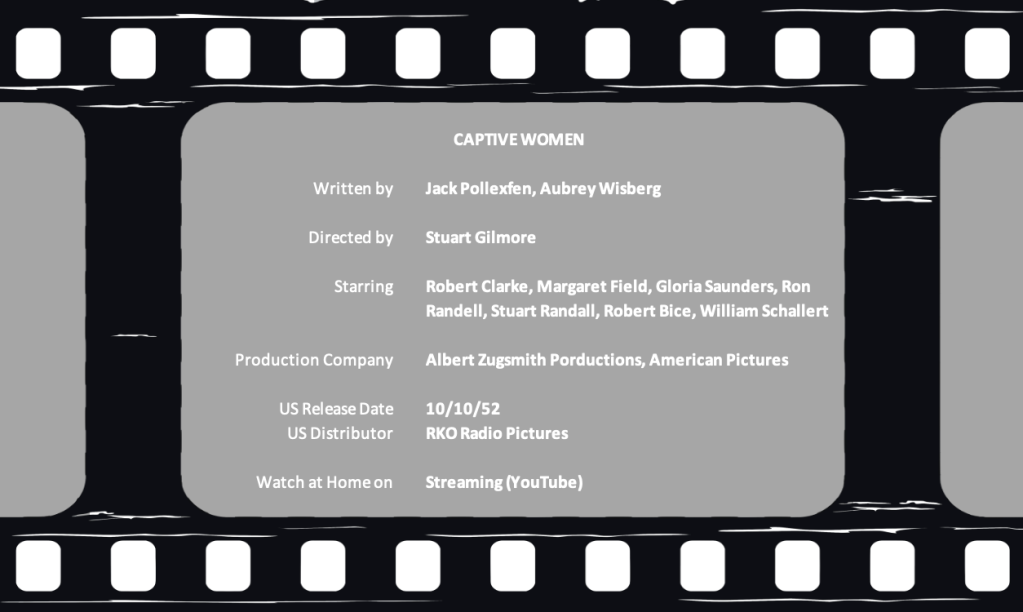
October 10, 1952
- Swedish NHL right wing Bobby Nystrom was born in Stockholm,
- The first video recording on magnetic tape was made in Los Angeles, California, and…

If you can withstand dialogue that sounds like is pulled directly from famous people and the Holy Bible, Captive Women (1952) is an early (maybe even the first) attempt to depict post-apocalyptic life after all-out nuclear war. As dark as this kind of movie can be, it’s comforting to know that as much as things change, they stay the same. People are still motivated by the same thing: greed and power.
Its original title was 3000 AD, which, considering the plot, makes more sense than Captive Women. Yes, some women are taken from the underground tribe of “Norms” and escorted back to the hiding place of the “Mutates,” but it’s not the focus of the plot, merely a sliver of the story. We don’t need much evidence to suppose the name change was some executive’s idea to put butts in seats.
In a lengthy prologue, we’re told that what we are about to see might happen, but it’s a world we must not let happen. We’re transported to a desolate wasteland in what remains of a “fabulous metropolis.” The aforementioned Mutates were physically affected by radiation and have a secret lair accessed by a tunnel under the river. The Norms live within the old subway system, where traces of civilization remain.
There’s a third group, the “Upriver Men” who kick the story into motion when they invade the Norms during festivities for the marriage of the chief’s son, Robert (Robert Clarke) to the beautiful Catherine (Gloria Saunders.) There’s already betrayal when we learn that Catherine is in love, and cahoots, with the leader of the Upriver Men, Jason (Douglas Evans.) She’s a real piece of work, scheming to profit from each changing situation.
Unlike many of the B-movies we love, Captive Women is not necessarily characterized by a low budget. Clarke is reported as saying:
Pollexfen and Wisberg were trying to make a better picture – sometimes, Hollywood thinks that if you spend more money, you make a better picture. Well, this is one instance where that didn’t happen.
William Schallert, who plays Carver, one of the Mutates who has no interest in making peace and, in fact, instigates trouble, said that the film was rewritten during the shoot and actors had to constantly learn new parts.
To me, it’s not as bad as all that. However, I’m most impressed by the concepts I’ve seen in subsequent sci-fi and post-apocalyptic films. Most notably, the Norms living in the dilapidated subway system reminds me of Beneath the Planet of the Apes. Here, they’re not mutants, but they have developed their own type of worship and fear outside forces invading their society. If the Mutates’ afflictions were transferred to the Norms, they’d be the humans, leaving the Upriver men to be the apes.


Leave a comment